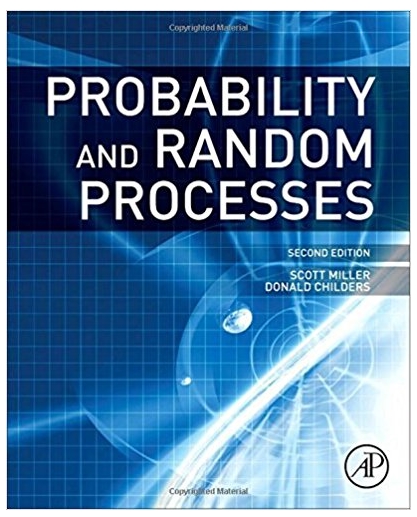Answered step by step
Verified Expert Solution
Question
1 Approved Answer
Essex Prescott Assignment HW3 due 10/09/2015 at 11:59pm PDT STAT300-101 2015W1 Suppose that in fact the sibling on the high fat diet will gain more
Essex Prescott Assignment HW3 due 10/09/2015 at 11:59pm PDT STAT300-101 2015W1 Suppose that in fact the sibling on the high fat diet will gain more weight than their sibling in 74 1. (1 pt) In 2012 researchers at Deakin University in Australia ran a twelve-week dietary intervention study involving twins. Within each twin pair volunteering, one sibling was placed at random on either a low or high fat diet for a period of twelve weeks. At the start of the study, each subject was weighed and the weight change (in g) for each subject was recorded at the end of the study, with a positive number indicating a gain, a negative number indicating a weight loss. Suppose the data collected were as in the table below: Pair: Low fat diet: High fat diet: 1 2 3 4 5 6 432 169 175 571 316 142 673 838 346 158 388 1128 Part d) Suppose that in fact the sibling on the high fat diet will gain more weight than their sibling in 93 7 8 9 10 11 12 200Part e) 596 145 480 259 156 338 876 Which401 338 967 453 statement best describes how the test appears to behave as the median of the distribution of interest shifts upwards? A. As the median of the within-pair difference shifts downwards so that weight gain is more likely under the high fat diet, the test has lower signicance level. B. As the median of the within-pair difference shifts downwards so that weight gain is more likely under the high fat diet, the test has higher signicance level. C. As the median of the within-pair difference shifts upwards so that weight gain is more likely under the high fat diet, the test is less powerful. D. As the median of the within-pair difference shifts upwards so that weight gain is more likely under the high fat diet, the test is more powerful. E. As the median of the within-pair difference shifts upwards so that weight gain is more likely under the high fat diet, the test has lower signicance level. The researchers decide to use a sign test to test the null hypothesis that the distribution of the differences in weight gain has median zero within twin pairs. Part a) Would it better to adopt a one or two-sided alternative hypothesis here? A. One-sided. B. Two-sided. C. It does not matter. Part b) Answer(s) submitted: The test statistic is taken as the number of pairs in which the sibling on the high fat diet gained more weight. The null hypothesis is to be rejected if this count is greater than 8. To three decimal places, what is the signicance level of this test? (incorrect) Part c) 2. (1 pt) Do male and female skiers differ in their tendency to use a ski helmet? Ruzic and Tudor (2011) report a study in 1 which 710 skiers completed a survey about aspects of their skiing habits. Suppose the results from the question on the survey about ski helmet usage were as follows: Part c) Perform a suitable test in R on the data above to test the null hypothesis. Gender Male Female Helmet Usage Never Occasionally 241 68 105 31 Always 185 80 Provide the value of your test statistic to 2 decimal places. Part d) Under the null hypothesis, the test statistic should be an observation from which probability distribution? Ruzic, L. and Tudor, A. (2011): Risk-taking behaviour in skiing among helmet wearers and nonwearers.Wilderness and Environmental Medicine , 291-296. A. The standard Normal distribution. B. The Chi-squared distribution on ve degrees of freedom. C. The Chi-squared distribution on four degrees of freedom. D. The Chi-squared distribution on two degrees of freedom. E. The F3,707 distribution. F. The t distribution on two degrees of freedom. Part a) Which of the following hypotheses could sensibly be tested by the data presented above? A. The proportions of males and females skiers are equal. B. There is no correlation between ski helmet usage and gender. C. There is no difference between male and female skiers in the proportions who never, occasionally, and always use a ski helmet. D. The mean number of male skiers who never wear a ski helmet is the same as the mean number of female skiers who never use one. E. Male and female skiers are as likely to never use a ski helmet as always use one. Part e) Would you reject or not reject your null hypothesis at the 5 % signicance level? A. Reject B. Not reject Answer(s) submitted: Part b) Under the null hypothesis, what is the expected number of men in the survey who never wear a ski helmet? (incorrect) Give your answer to 2 decimal places. Generated by c WeBWorK, http://webwork.maa.org, Mathematical Association of America 2
Step by Step Solution
There are 3 Steps involved in it
Step: 1

Get Instant Access to Expert-Tailored Solutions
See step-by-step solutions with expert insights and AI powered tools for academic success
Step: 2

Step: 3

Ace Your Homework with AI
Get the answers you need in no time with our AI-driven, step-by-step assistance
Get Started


